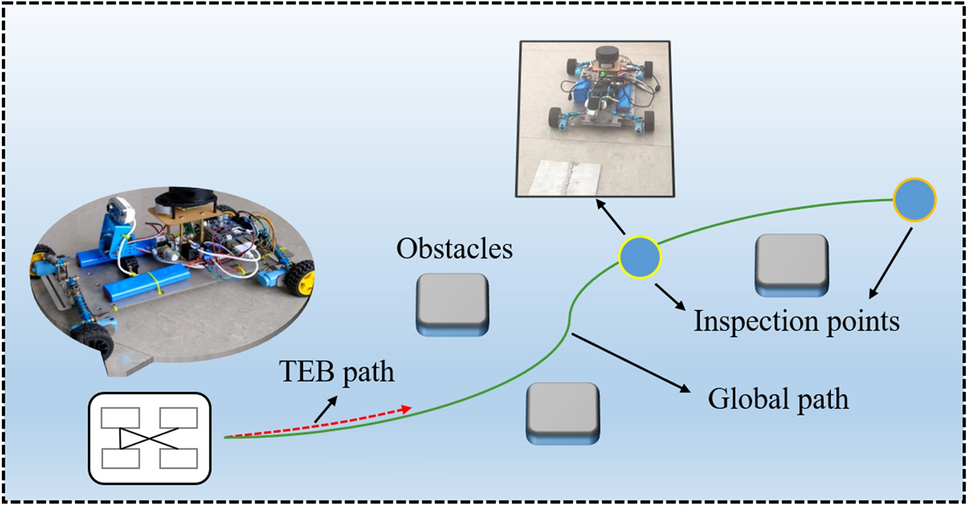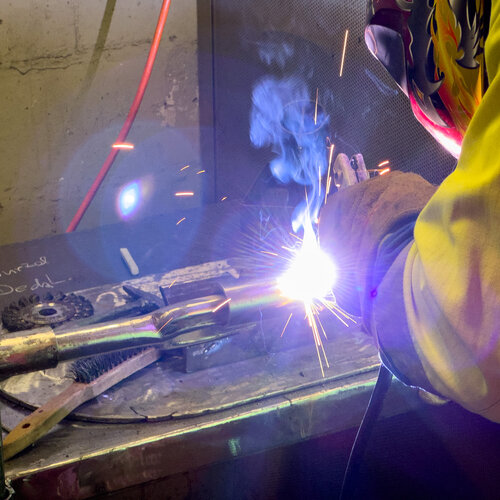Welding Inspection Racine: Making Certain Precision and Integrity in Every Weld
Welding Inspection Racine: Making Certain Precision and Integrity in Every Weld
Blog Article
Cutting-edge Strategies to Fillet Weld Evaluation and Testing: Enhancing Weld High Quality and Conformity Requirements
In the realm of welding, the quality and stability of fillet welds play an important duty in making certain the architectural stability and reliability of various industrial parts. With the constant drive for improved effectiveness and compliance with strict standards, the exploration of innovative methods to fillet weld evaluation and screening has actually become imperative.
Advanced Non-Destructive Testing Techniques
Utilizing cutting edge innovations, progressed non-destructive screening approaches play an essential function in making sure the honesty and quality of fillet welds. These methods, such as phased variety ultrasonic screening (PAUT) and magnetic particle testing (MPT), deal in-depth understandings right into the weld's interior structure without causing any kind of damage to the product. PAUT, for instance, makes use of several ultrasonic aspects to evaluate the weld from different angles, giving a detailed visualization of possible flaws like lack of combination or splits.
By using these sophisticated non-destructive testing methods, weld examiners can properly analyze the high quality of fillet welds, guaranteeing conformity with industry criteria and laws. The ability to discover problems early on not only enhances weld high quality but additionally avoids pricey rework or failures in architectural integrity, highlighting the relevance of these innovative testing approaches in welding examinations.
Robotics and Automation in Assessment
The integration of robotics and automation has changed the examination procedure for fillet welds, enhancing efficiency and precision in quality evaluation. Robotics offer exact control and repeatability in inspecting welds, making sure consistent and trusted results. Automated systems can be programmed to comply with particular inspection paths, making certain complete protection of welds and minimizing the threat of human error.
Robotic evaluation systems equipped with innovative sensing units can discover and gauge weld functions with high accuracy, supplying in-depth data for evaluation. These systems can determine defects such as cracks, lack of blend, and porosity, making it possible for punctual corrective activities to be taken. In addition, robotics and automation allow for real-time information collection and analysis, offering immediate responses to operators and assisting in fast decision-making processes.
Moreover, using robotics and automation in fillet weld examination boosts overall efficiency by lowering assessment times and boosting evaluation throughput. By enhancing the evaluation process, manufacturers can make certain weld quality and conformity requirements are fulfilled successfully, inevitably causing cost savings and enhanced product quality.
Utilizing Artificial Knowledge for Analysis
Expert system plays a critical function in enhancing the efficiency and precision of evaluation in fillet weld assessment processes. By taking advantage of the power of AI, inspectors can improve the analysis of weld high quality and conformity standards, resulting in extra reliable and precise results. AI formulas can swiftly refine vast quantities of information from weld evaluations, detecting defects or inconsistencies that may be testing to recognize with the naked eye. This advanced technology allows real-time monitoring of weld quality, permitting for instant restorative actions to be taken if any problems are discovered.
In addition, AI systems can gain from past evaluation information, continually enhancing their capacity to identify prospective problems and deviations in fillet welds. This adaptive discovering capacity enhances the overall top quality control procedure, decreasing the possibility of human error and ensuring that welds satisfy the required requirements. By incorporating expert system right into fillet weld analysis, sectors can achieve greater degrees of effectiveness, consistency, and compliance in their assessment practices.
Portable Tools for On-Site Evaluation
 Enhancing area evaluation performance, the fostering of portable tools reinvents on-site analysis procedures for fillet welds. These devices supply versatility and convenience, enabling examiners to carry out comprehensive exams in numerous areas, including challenging or remote atmospheres. Portable tools such as ultrasonic screening devices, magnetic particle evaluation equipment, and electronic radiography systems give real-time information and high-resolution imaging abilities, enabling quick decision-making and instant responses on weld top quality.
Enhancing area evaluation performance, the fostering of portable tools reinvents on-site analysis procedures for fillet welds. These devices supply versatility and convenience, enabling examiners to carry out comprehensive exams in numerous areas, including challenging or remote atmospheres. Portable tools such as ultrasonic screening devices, magnetic particle evaluation equipment, and electronic radiography systems give real-time information and high-resolution imaging abilities, enabling quick decision-making and instant responses on weld top quality.One substantial advantage of portable devices is their ability to simplify inspection treatments, decreasing downtime and enhancing general productivity. Inspectors can easily move these devices to various task sites, getting rid of the need for transferring heavy machinery or elements to off-site facilities. In addition, the mobility of these tools advertises cost-effectiveness by minimizing transportation costs and accelerating examination timelines.
In addition, using mobile devices for on-site examination advertises positive top quality control steps, as examiners can without delay recognize and attend to any kind of prospective welding issues or disparities. By incorporating these cutting-edge modern technologies right into on-site assessment practices, welding professionals can make certain compliance with industry criteria and improve weld high quality, ultimately bring about boosted structural stability and security in various welding applications.
Assimilation of Information Monitoring Systems
Having enhanced on-site inspection procedures through the utilization of portable tools, the next phase entails the smooth combination of information management systems to even more boost efficiency and information evaluation abilities in fillet weld evaluation and testing. Welding Inspection Racine. By incorporating information administration systems right into the evaluation process, companies can streamline information collection, storage space, and analysis. This assimilation enables for real-time monitoring of weld top quality, immediate identification of problems, visit homepage and prompt decision-making to correct any type of concerns that may develop during the inspection process
Information management systems play an important duty in centralizing examination data, facilitating easy access for licensed employees, and ensuring information stability and security. Via the combination of these systems, examiners can create thorough reports, track historic information for trend evaluation, and boost general procedure performance. The combination of data monitoring systems makes it possible for seamless communication in between different stakeholders included in the assessment process, cultivating collaboration and boosting general quality control procedures. Inevitably, the integration of data administration systems serves to raise the criteria of fillet weld inspection and testing, making sure conformity with sector policies and improving weld top quality.
Verdict
Finally, innovative methods to fillet weld examination and screening have considerably improved weld quality and compliance standards. Advanced non-destructive testing methods, robotics, automation, expert system, mobile tools, and information administration systems have actually revolutionized the method weld examinations are performed. By utilizing these technologies, industries can make sure that welds fulfill the required quality requirements and guidelines, inevitably improving general effectiveness and safety and security in welding procedures.

By utilizing these advanced non-destructive testing methods, weld examiners can properly examine the high quality of fillet welds, ensuring conformity with industry standards and policies. Mobile tools such as ultrasonic screening tools, magnetic bit inspection devices, and digital radiography systems supply real-time data and high-resolution imaging capacities, making it discover this possible for fast decision-making and prompt feedback on weld top quality.
Having actually enhanced on-site assessment procedures with the application of mobile tools, the following phase includes the smooth assimilation of information monitoring systems to additionally enhance performance and data analysis capabilities in fillet weld inspection and screening (Welding Inspection Racine). Ultimately, the combination of data administration systems serves to boost the criteria of fillet weld evaluation and screening, making sure conformity with market regulations and boosting weld top quality
 In click for more info verdict, ingenious approaches to fillet weld examination and testing have dramatically improved weld top quality and compliance requirements.
In click for more info verdict, ingenious approaches to fillet weld examination and testing have dramatically improved weld top quality and compliance requirements.Report this page